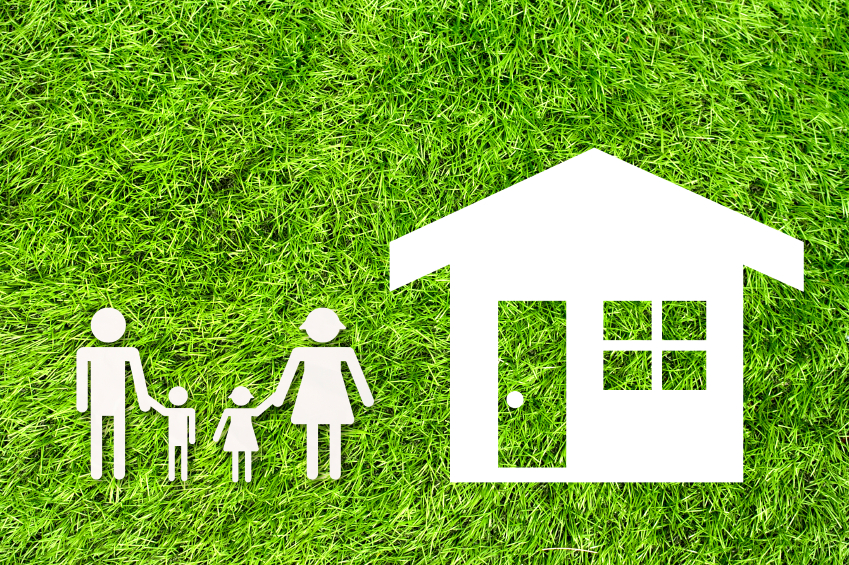 As more people become aware of their carbon footprint, many are looking for home interior alternatives that allow them to live consciously while still creating a beautiful home. With the growing number of products that are making use of byproducts or recycled materials, you won’t have to sacrifice appearance or comfort for an eco-friendly home. In fact, you’ll feel better about your home knowing it’s environmentally friendly.
As more people become aware of their carbon footprint, many are looking for home interior alternatives that allow them to live consciously while still creating a beautiful home. With the growing number of products that are making use of byproducts or recycled materials, you won’t have to sacrifice appearance or comfort for an eco-friendly home. In fact, you’ll feel better about your home knowing it’s environmentally friendly.
1. Organic Fibers
When buying linens, pillow covers or woven area rugs, opt for those made of organically grown cotton or other eco-friendly fibers such as hemp, bamboo, tencel or wool. Not only are these textiles less often chemically treated, but many of these natural fibers are highly resistant to wear and feel better too.
2. Recycled Materials
This could mean choosing recycled or eco-friendly materials for new additions or flooring, as well as simply buying furniture made with refinished wood, or used furniture. Eco-friendly doesn’t necessarily have to mean new; reusing and repurposing furniture is a great way of making your interior more environmentally friendly, and goes well with vintage or rustic themes.
3. Look for Low VOC
VOC stands for “volatile organic compounds” and are commonly found in house paints, as well as building materials and carpeting. These chemicals are released when the products are used or stored. Look for “low VOC” next time you want to paint a room in your home or carpet your floor.
4. Creative By Products
Many byproducts are being converted into household materials instead of being discarded in landfills or burned. An example would be coconut tiles, which use the shells of coconuts to make decorative tiles with intricate designs or weaves. Each tile is finished with low-VOC resin and set on a backer made of sustainably harvested wood. These tiles shouldn’t be used in any place where they can be become wet, but otherwise they make unique design pieces.
5. Strand woven Bamboo Flooring
Strand woven bamboo is made from plantation grown and sustainably harvested bamboo, and also has a zero-VOC finish. When some people think of bamboo they think of soft wood that might easily take damage, but strand woven bamboo is incredibly hard and durable, and can take a lot of wear. Bamboo also has a very attractive grain and comes in both light and dark finishes.
6. Bio-Glass
Beautiful sliding barn doors or glass pantry doors can also be eco-friendly, and post-consumer recycled glass is the perfect material for your kitchen or bathrooms. This heated and compressed material contains no binders, colorants, fillers, or other admixtures and has no off-gassing. You can choose from colors of white, green, blue and brown, and they make a unique addition to any home interior. Many home decorating pieces such as vases, glassware or decorative bottles come in recycled glass too, so take that into consideration next time you’re shopping for glass.
7. Eco lights
There are a few ways of making your lighting more eco-friendly. You can choose LED or energy star rated bulbs, as well as install motion-detecting light switches in your entryway, halls, or any place with frequent foot traffic. Motion detecting lights will turn off automatically at a set amount of time, preventing them from being left on longer than needed.
8. Decorate with Plants
Put plants all over your house for a natural and uplifting atmosphere as well as for a natural way of increasing air quality in your home. Flowering plants will add color to your interior, or if you happen to have a garden outside you can add some color and aromas with your own freshly cut blooms.
9. Insulation Windows
A well insulated home uses less heating and cooling energy, which is not only good for your wallet, but also good for the environment. Updates like these are always worth the investment as they end up paying for themselves over time. Another bonus is new windows, which will make your home look a bit shinier and new.
10. Keep your Outdoor Trees
If you have any trees looming around outside, definitely keep them! These not only help to keep your house cool during the warm months or your grass from drying out, but they turn carbon emission into oxygen, so you’ll definitely want to keep those around your property.
There is so much that can be done to make eco-friendly changes to your home, and as you can see, they aren’t that expensive either. You can take it one step at a time to gradually transform your home into an environmentally conscious abode, and you’ll feel good about your decorating decisions.







